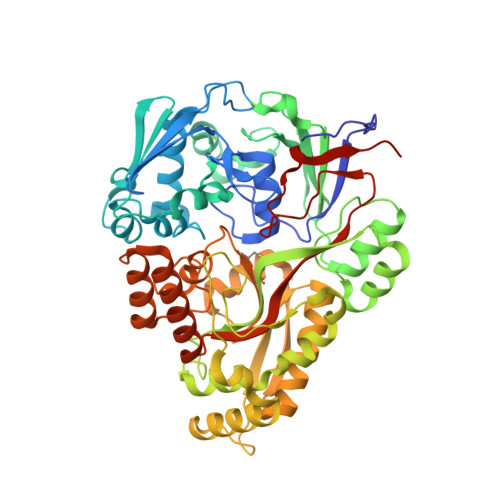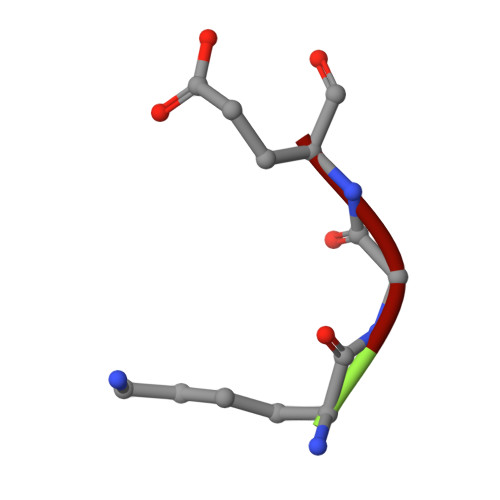Escherichia coli peptide binding protein OppA has a preference for positively charged peptides.
Klepsch, M.M., Kovermann, M., Low, C., Balbach, J., Permentier, H.P., Fusetti, F., de Gier, J.W., Slotboom, D.J., Berntsson, R.P.(2011) J Mol Biol 414: 75-85
- PubMed: 21983341
- DOI: https://doi.org/10.1016/j.jmb.2011.09.043
- Primary Citation of Related Structures:
3TCF, 3TCG, 3TCH - PubMed Abstract:
The Escherichia coli peptide binding protein OppA is an essential component of the oligopeptide transporter Opp. Based on studies on its orthologue from Salmonella typhimurium, it has been proposed that OppA binds peptides between two and five amino acids long, with no apparent sequence selectivity. Here, we studied peptide binding to E. coli OppA directly and show that the protein has an unexpected preference for basic peptides. OppA was expressed in the periplasm, where it bound to available peptides. The protein was purified in complex with tightly bound peptides. The crystal structure (up to 2.0 Å) of OppA liganded with the peptides indicated that the protein has a preference for peptides containing a lysine. Mass spectrometry analysis of the bound peptides showed that peptides between two and five amino acids long bind to the protein and indeed hinted at a preference for positively charged peptides. The preference of OppA for peptides with basic residues, in particular lysines, was corroborated by binding studies with peptides of defined sequence using isothermal titration calorimetry and intrinsic protein fluorescence titration. The protein bound tripeptides and tetrapeptides containing positively charged residues with high affinity, whereas related peptides without lysines/arginines were bound with low affinity. A structure of OppA in an open conformation in the absence of ligands was also determined to 2.0 Å, revealing that the initial binding site displays a negative surface charge, consistent with the observed preference for positively charged peptides. Taken together, E. coli OppA appears to have a preference for basic peptides.
Organizational Affiliation:
Center for Biomembrane Research, Department of Biochemistry and Biophysics, Stockholm University, SE-106 91 Stockholm, Sweden.















